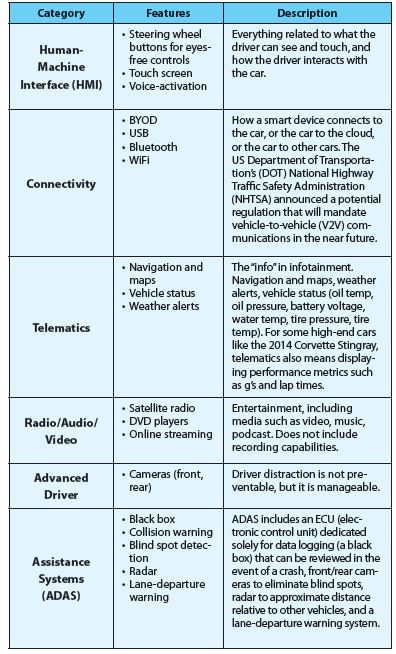In “ye olden 20th century,” automotive infotainment meant an AM/FM radio. Eventually, the center stack contained a tape deck—and a CD player, if you were fancy; or a 3-disc CD player, if you were super fancy. Lights, gauges, and indicators displayed oil pressure, water temperature, and….well, you know the rest.

Automotive infotainment: before and after.
In the 21st century, the rules have changed. Most consumers today assess cars for their functionality. The question is “what does my car have to offer (outside of performance) that can enhance my productivity and overall driving experience?” We value our time, we value our experiences, and with a new era in consumer electronics, we value mobility and connectivity as well.
You can expect more cars rolling off the line to come standard with some or all of these automotive infotainment features:

Texas Instruments, Analog Devices, and ST Microelectronics are leading suppliers in automotive infotainment, providing innovative, AEC-Q qualified products that offer multiple solutions.
With the wealth of features presented by automotive infotainment, OEMs and governments must take a serious look at features that are productive versus those that are superfluous. It also requires delineating between driver-centric or passenger-centric features. Telematics is driver-centric, entertainment (i.e. Twitter or YouTube) is passenger-centric— the two must not cross over.
Automotive infotainment is taking root as a major driver of market competition in the near future. Just as smartphones and tablets are integrated into our daily lives, it is just a matter of time before automotive connectivity will catch up.
By Naima Rivas, Mouser Electronics
Advertisement
Learn more about Mouser Electronics





